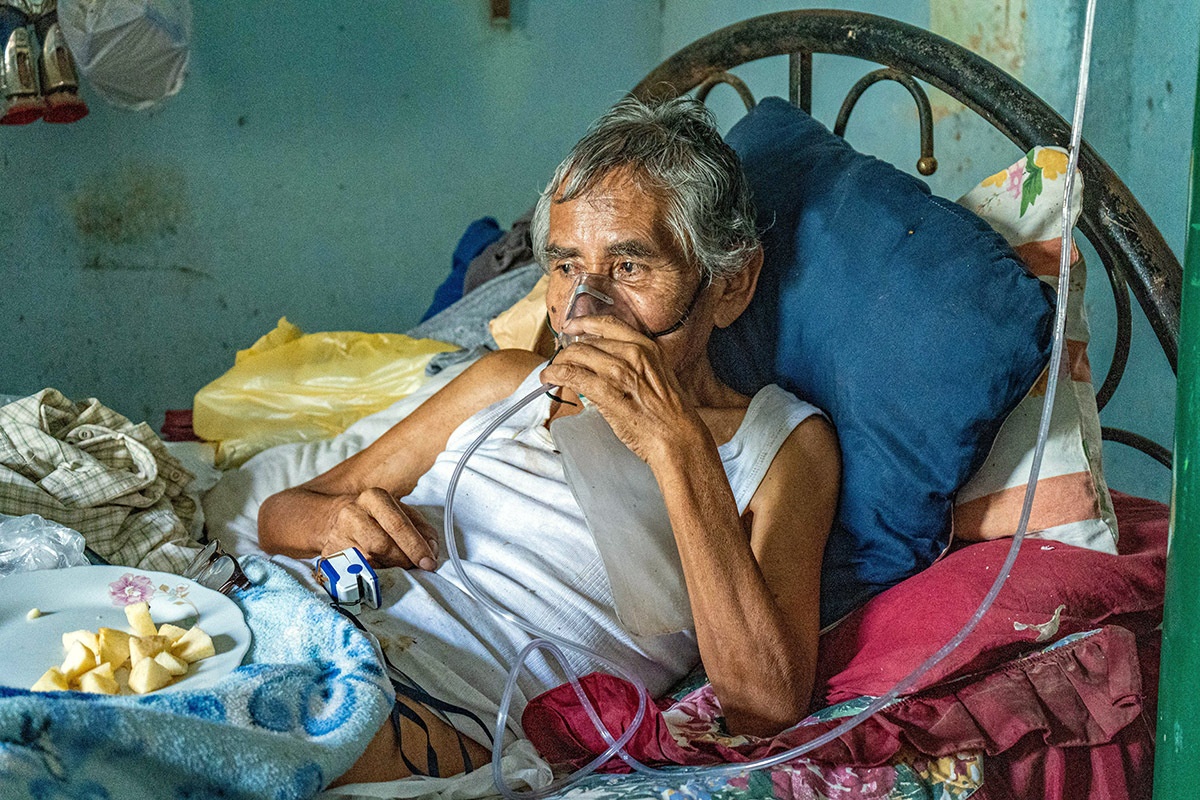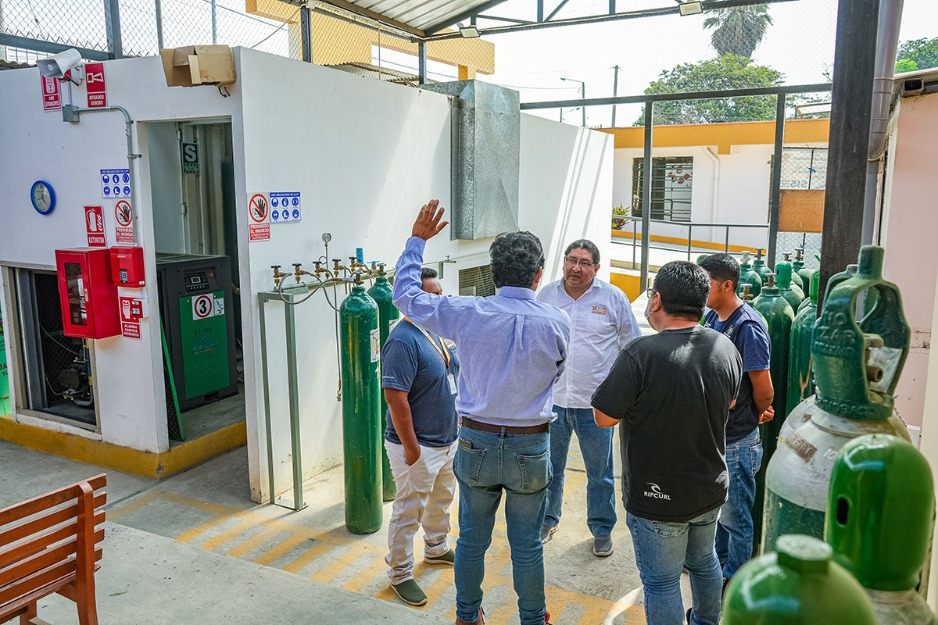How An Oxygen Plant Is Saving Lives In Peru
PIH repairs oxygen system through BRING O2 partnership
Posted on Mar 10, 2023

Leoncio Carrión was struggling to breathe.
The 78-year-old was battling pulmonary fibrosis, his breaths becoming shorter by the day, and had arrived at the hospital gasping for air.
Had he come just weeks earlier, he may not have survived. But the Rosa Sanchez de Santillan Hospital in Ascope, a town in Trujillo, Peru, had just acquired a lifesaving resource: medical oxygen.
Several tons of it, to be exact, supplied by an oxygen plant newly repaired by engineers with Socios En Salud, as Partners In Health is known in Peru.
Oxygen is essential for patients with a host of respiratory illnesses, including tuberculosis, lung disease, pneumonia, and severe COVID-19. But in many low- and middle-income countries, medical oxygen is in extremely short supply. Even before the pandemic, 9 in 10 hospitals in low- and middle-income countries lacked access to oxygen therapy. And as many as 800,000 children died due to lack of oxygen.
The oxygen shortage only worsened during the spread of COVID-19—a reality that staff at the Ascope hospital saw every day.
“We did not have a separate area, health personnel, [or] medical supplies to care for COVID-19 patients,” says Ana, a nurse at the hospital. “We witnessed the loss of many people’s lives who did not have the chance to receive oxygen.”
Supplying Oxygen, Saving Lives
That’s an issue BRING O2 is trying to address.
BRING O2 is PIH’s initiative to accelerate access to safe, reliable, and high-quality medical oxygen in five countries: Malawi, Rwanda, Peru, Lesotho, and Madagascar. The initiative, which is funded by Unitaid and completed in partnership with Build Health International and Pivot Madagascar, has facilitated over a dozen oxygen plant repairs, along with training for staff. Through the initiative, Socios En Salud has repaired 20 oxygen plants across Peru and trained staff on how to operate and maintain the equipment.
“Having medical oxygen available 24 hours a day means having the possibility of saving [many] lives,” says Dr. Luis Cáceres, a doctor at Rosa Sanchez. “We all deserve to receive the best health care and delivery, [provided] with quality and equal opportunity.”
Oxygen plants are crucial to delivering that care. Housed in standard-size shipping containers, oxygen plants can run 24/7 and produce thousands of liters of oxygen per day—enough to support patients in the hospital and to refill oxygen tanks for those at home, as well as for health centers and emergency response teams.
Before Socios En Salud’s repair work began, the oxygen plant at the hospital was rundown, leaving Ascope, a town of more than 6,800 in northern Peru, with virtually no access to medical oxygen.
“It is vital to plan for, implement, and follow up on the maintenance of this equipment,” says Jean Franco Bravo, an engineer with Socios En Salud and coordinator of the BRING O2 project.
Socios En Salud has worked in Peru since 1994, when it responded to a deadly outbreak of multidrug-resistant tuberculosis. In the decades since, Socios En Salud has expanded its programs to provide medical care and social support for thousands of patients from Lima to Trujillo to Arequipa. That work is part of Partners In Health’s larger mission to strengthen health systems and achieve universal health care in the countries where it works, in partnership with local and national governments.
As Peru has responded to devastating surges of COVID-19 and other respiratory diseases, including tuberculosis, accelerating access to medical oxygen has been crucial to strengthening health systems and care.

Helping Patients Breathe
In November, Socios En Salud’s team of clinicians and engineers arrived in Ascope and carried out an assessment. The oxygen plant had dangerously high voltages and lacked safety features such as fire alarm systems and generators, among others. Hospital staff also weren’t trained on how to operate or maintain the plant.
Over two months of repair work followed, along with training for hospital staff. The Socios En Salud team also performed a simulation of a COVID-19 surge and how it would impact oxygen supply, identifying gaps in care delivery where every second, every breath, counts.
Now, thanks to that work, the hospital has a fully operational oxygen plant—a victory not only for patients in its oxygen therapy beds, but also for those at home and for the 15 health centers and various medic teams who rely on it to refill oxygen tanks.
The relief couldn’t come soon enough. The plant has provided oxygen therapy for more than 200 patients in Ascope and surrounding areas.
Carrión is one of those patients. His family goes to the hospital every week to refill his oxygen tank. Health workers also visit him at home to help him take his medication—part of the accompaniment that is key to Partners In Health’s work worldwide.
That care has sustained Carrión, in more ways than one.
“I feel calmer and safer,” he says. “Thank God, now the Rosa Sanchez de Santillan Hospital has an oxygen plant that allows me to continue living.”

